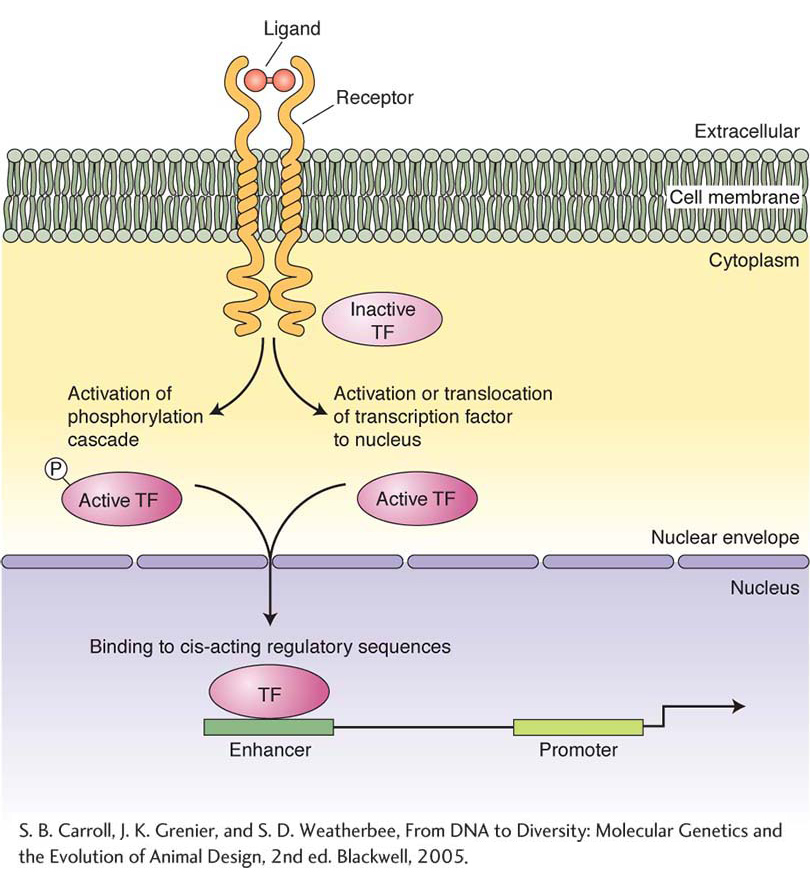
Most signaling pathways operate through similar logic but have different protein components and signal- e- s- A- t-
[S. B. Carroll, J. K. Grenier, and S. D. Weatherbee, From DNA to Diversity: Molecular Genetics and the Evolution of Animal Design, 2nd ed. Blackwell, 2005.]